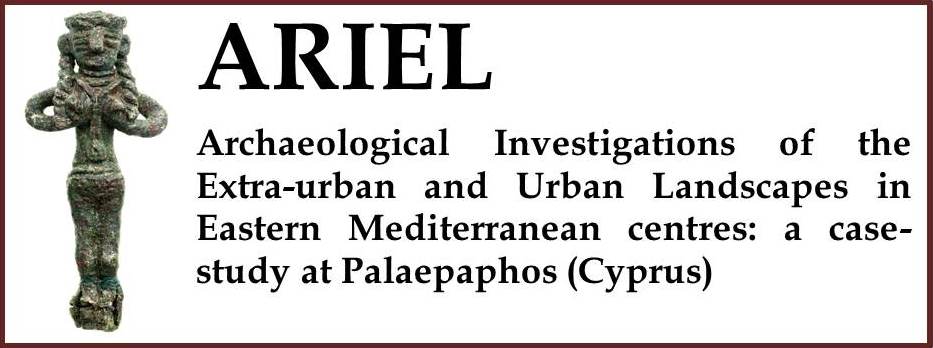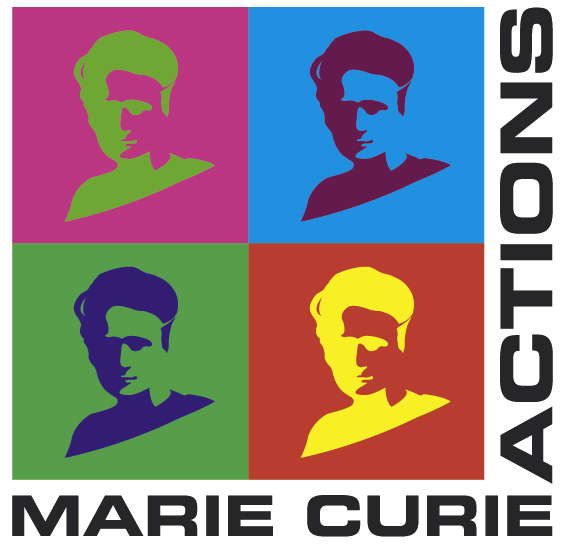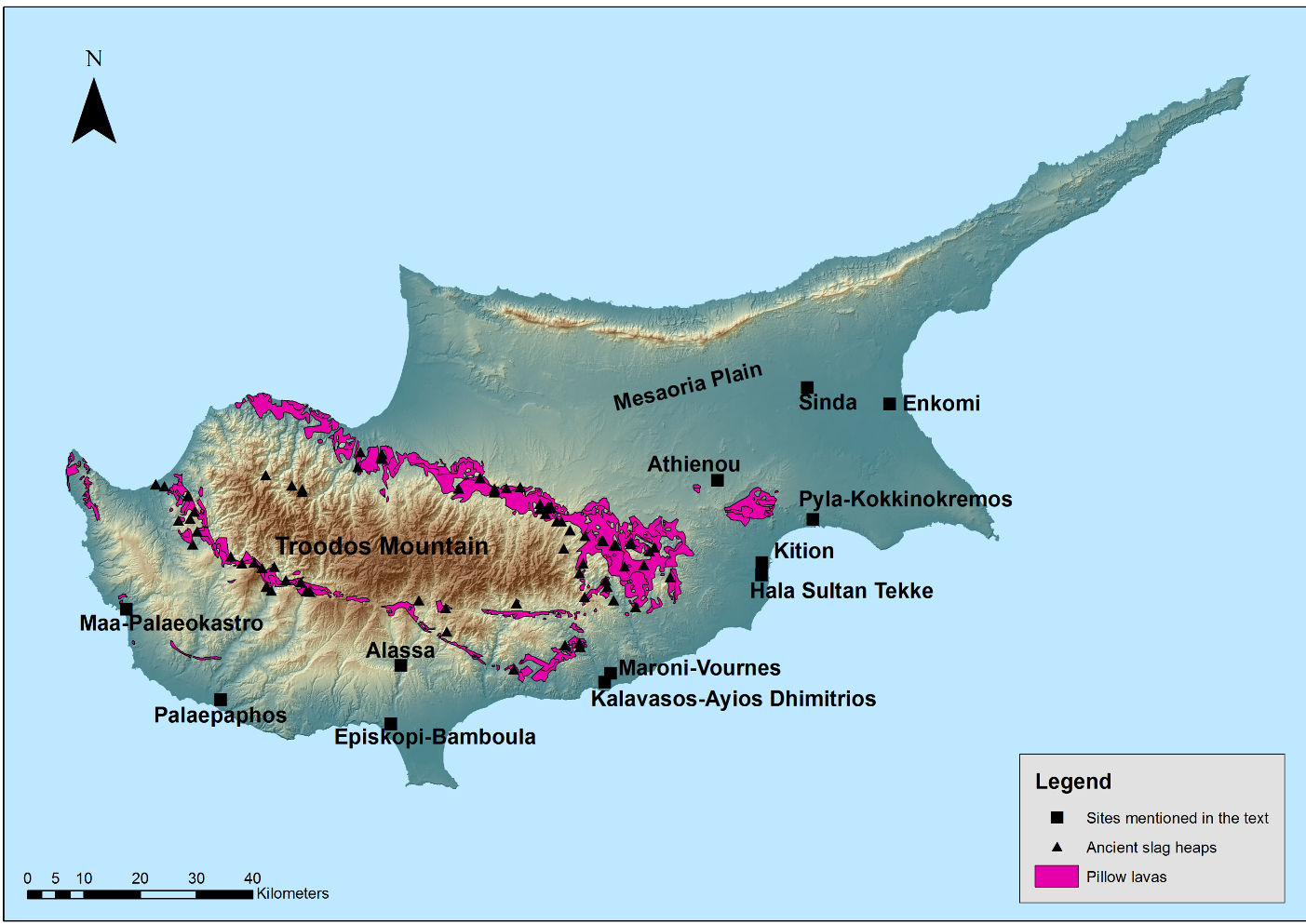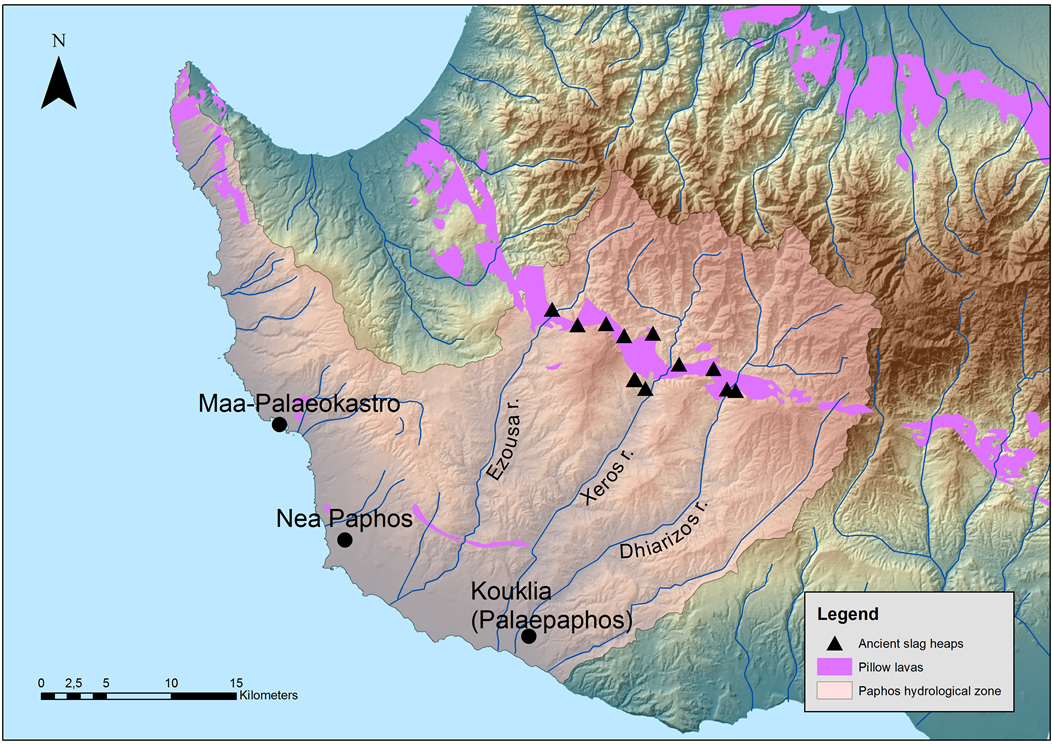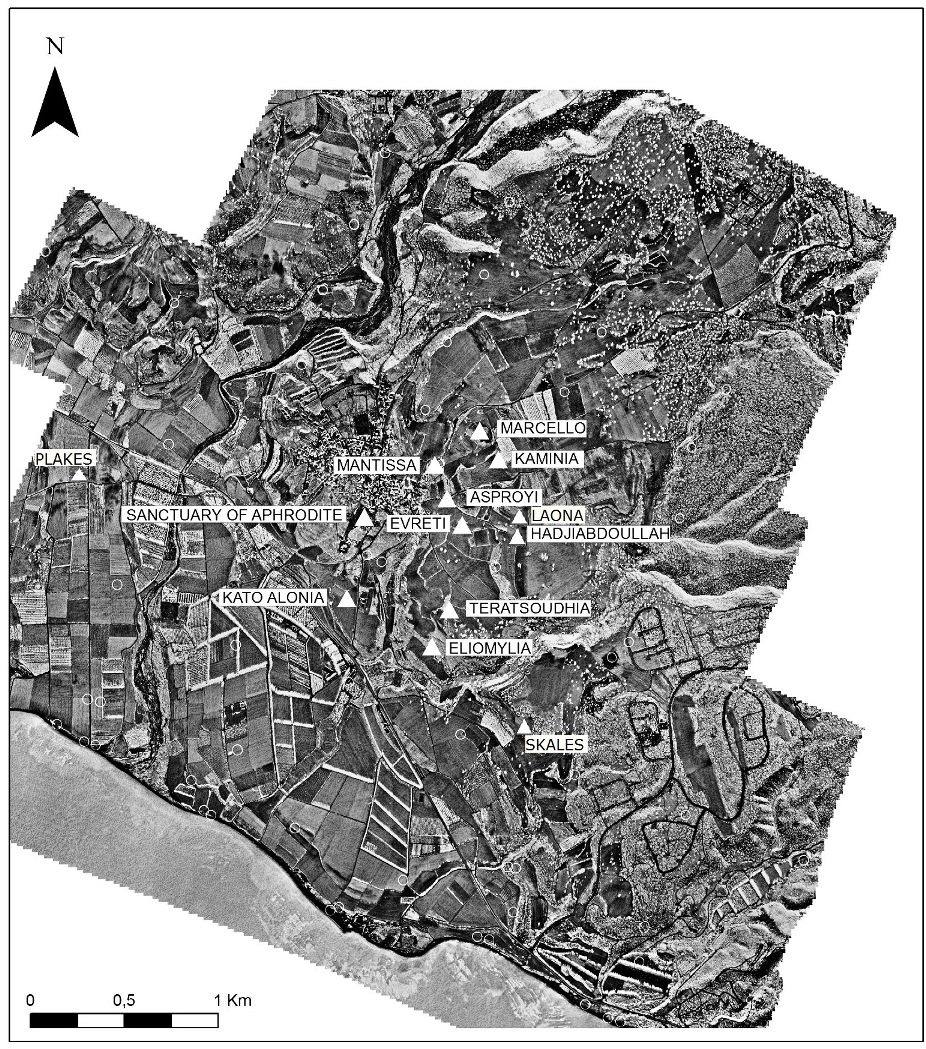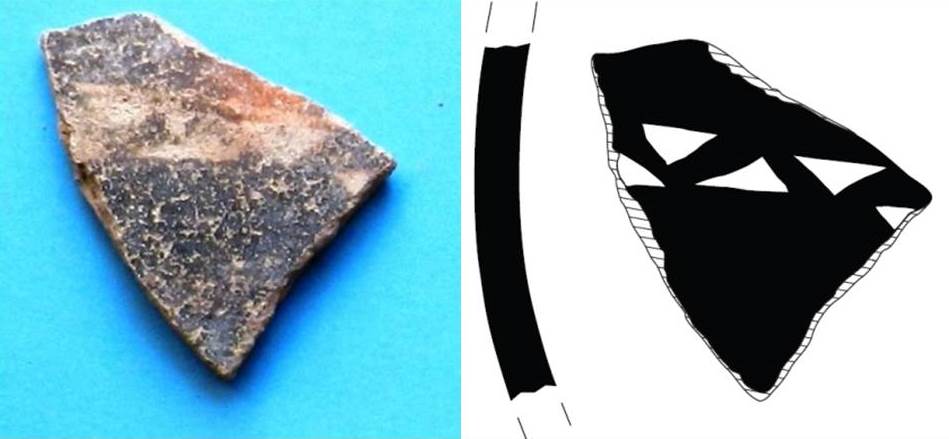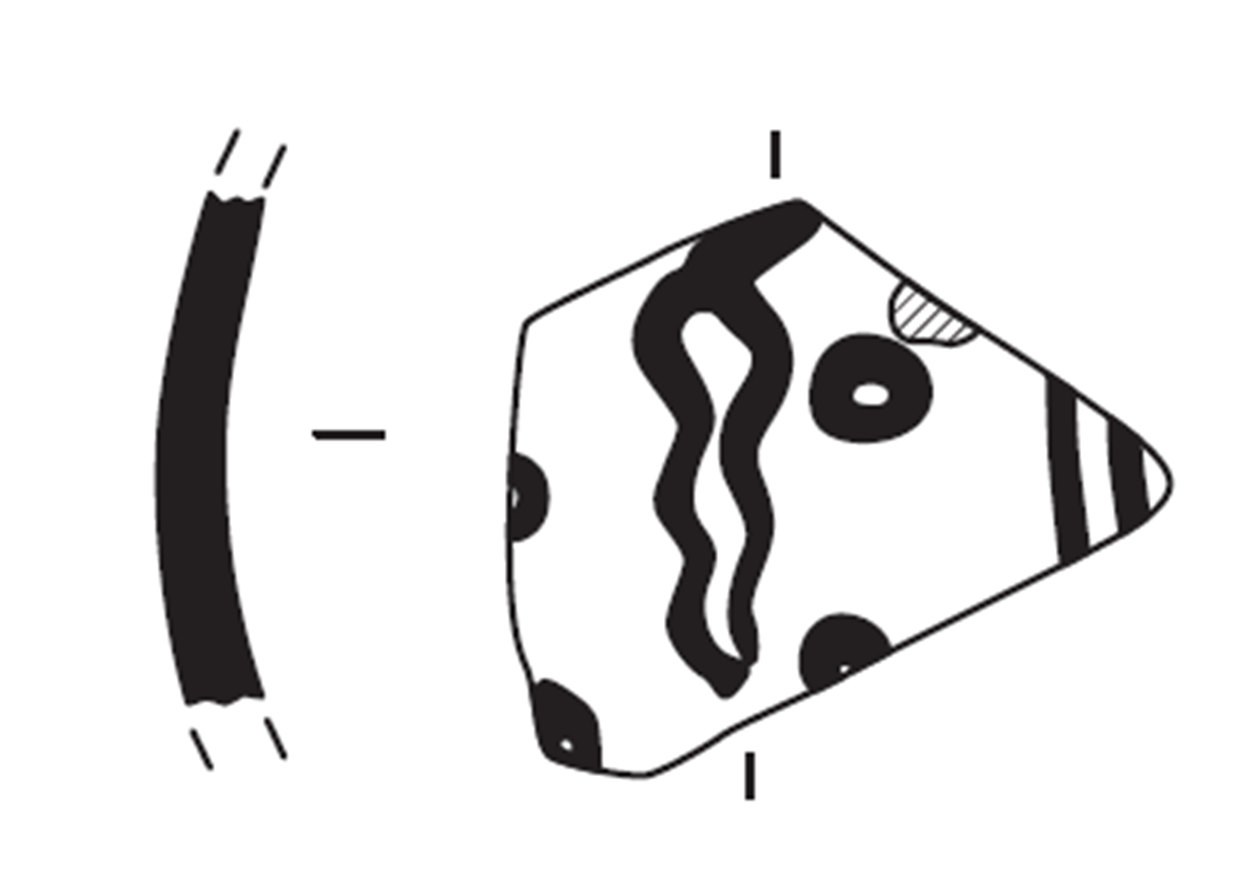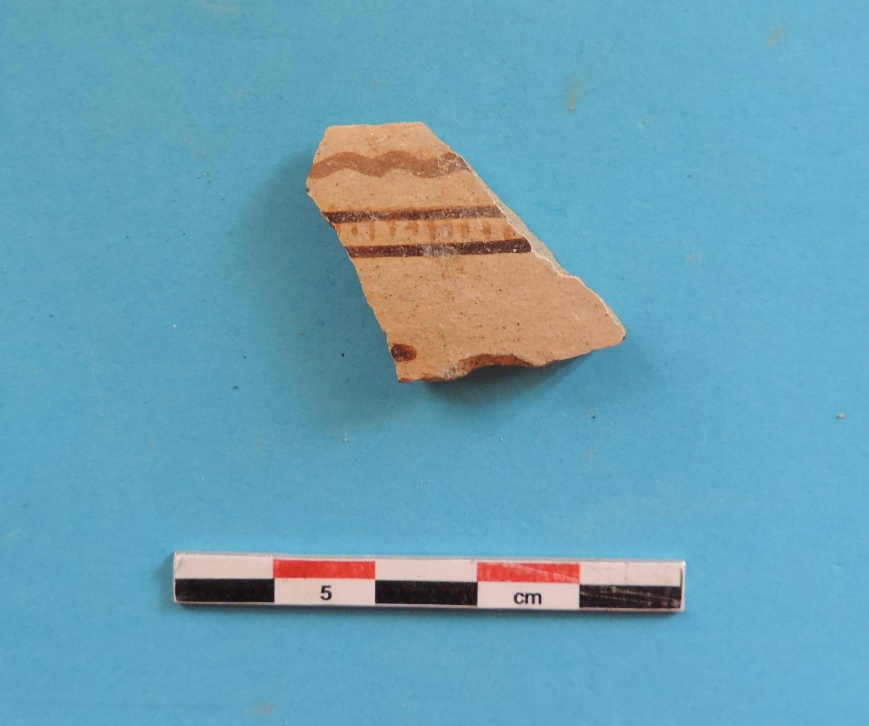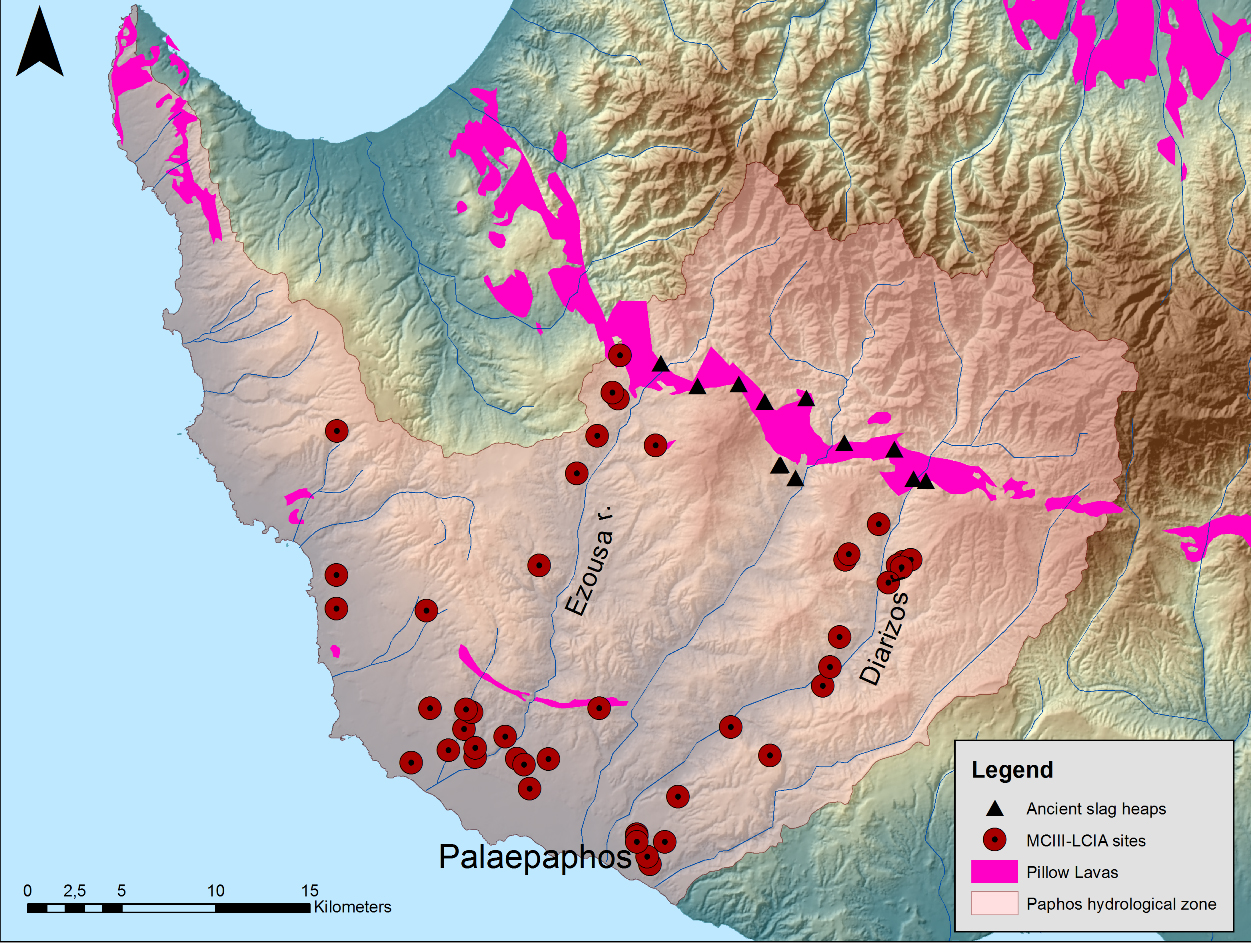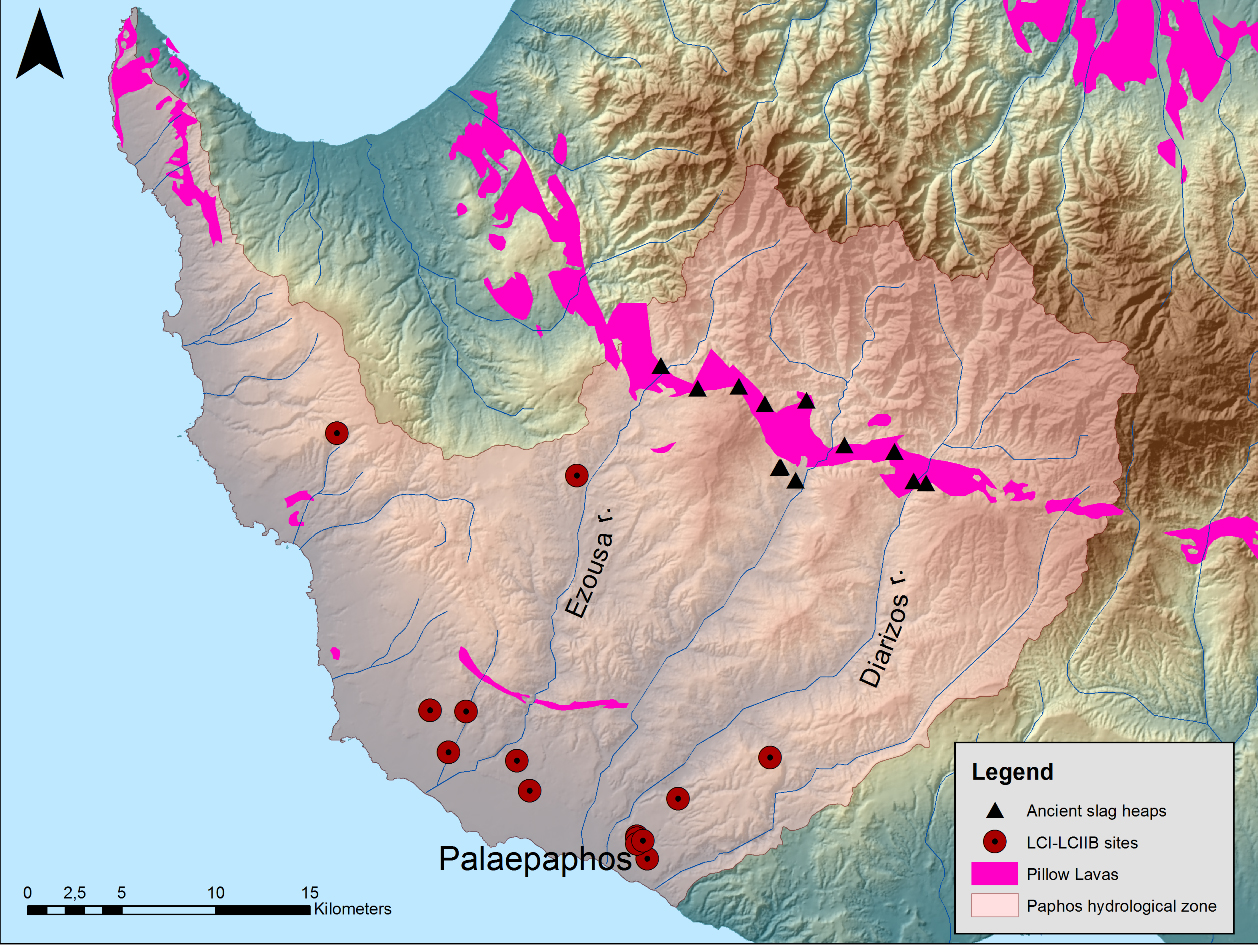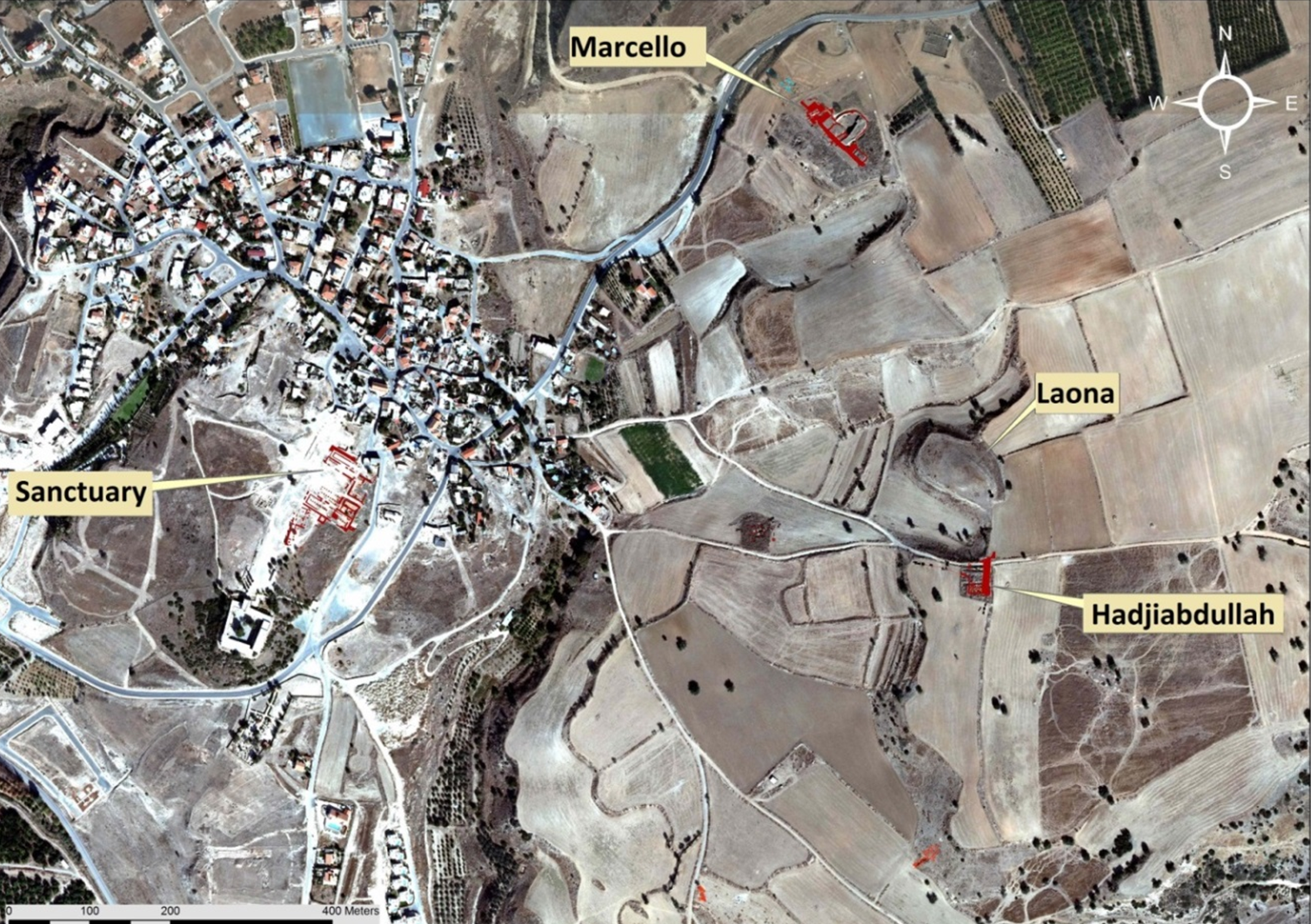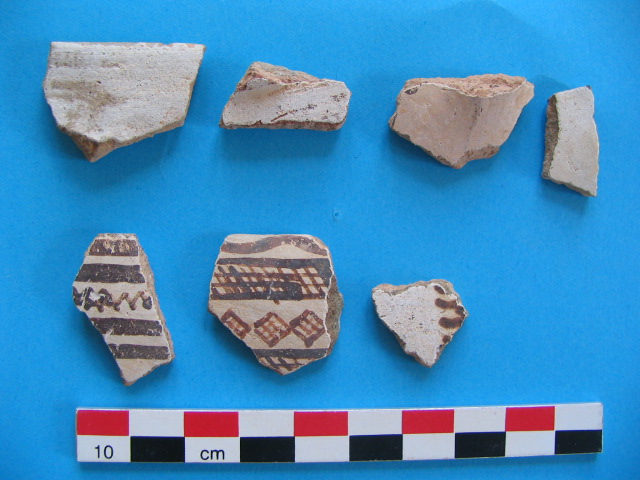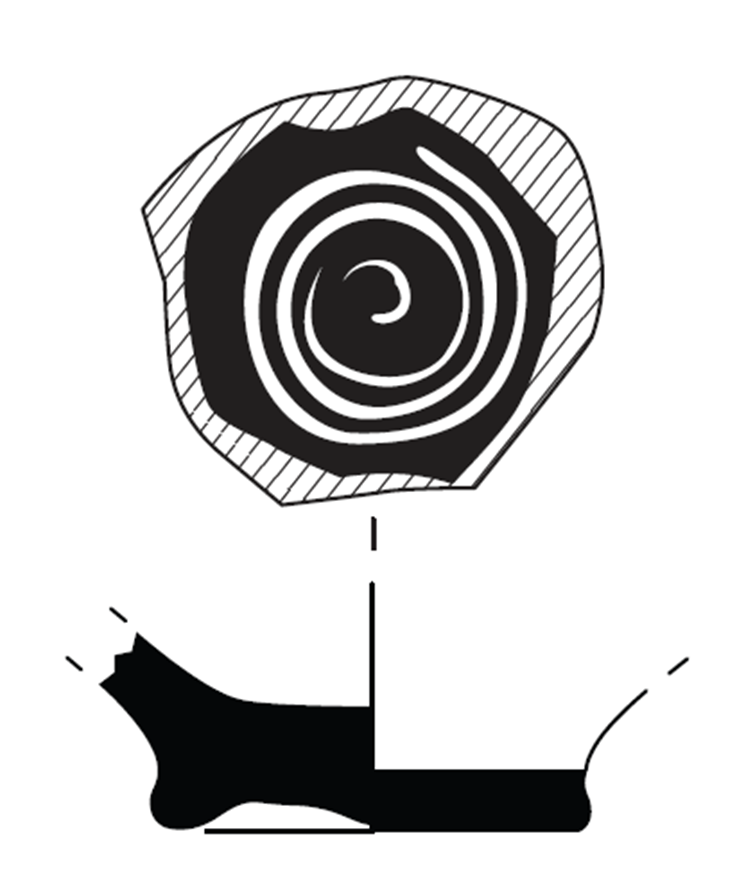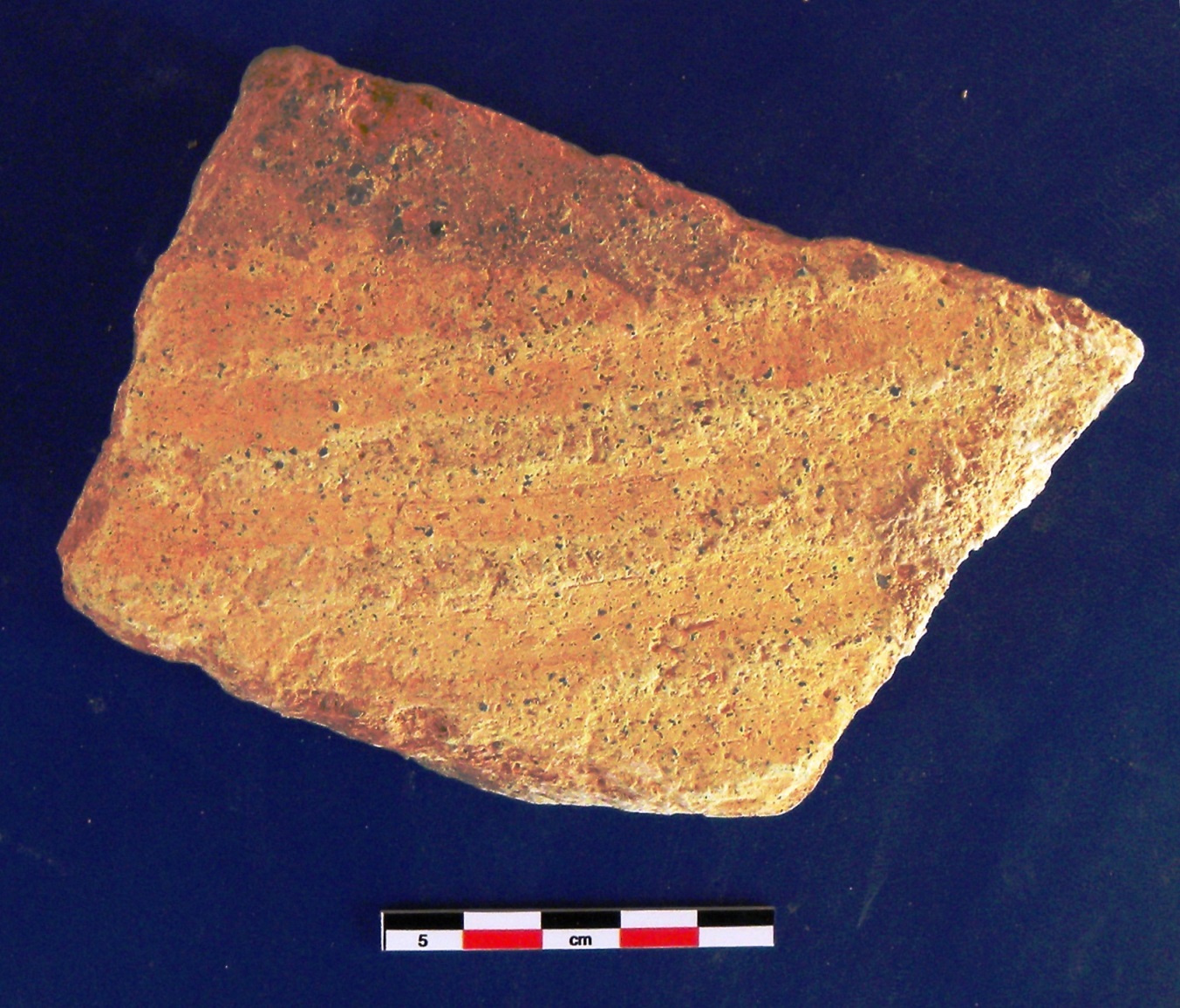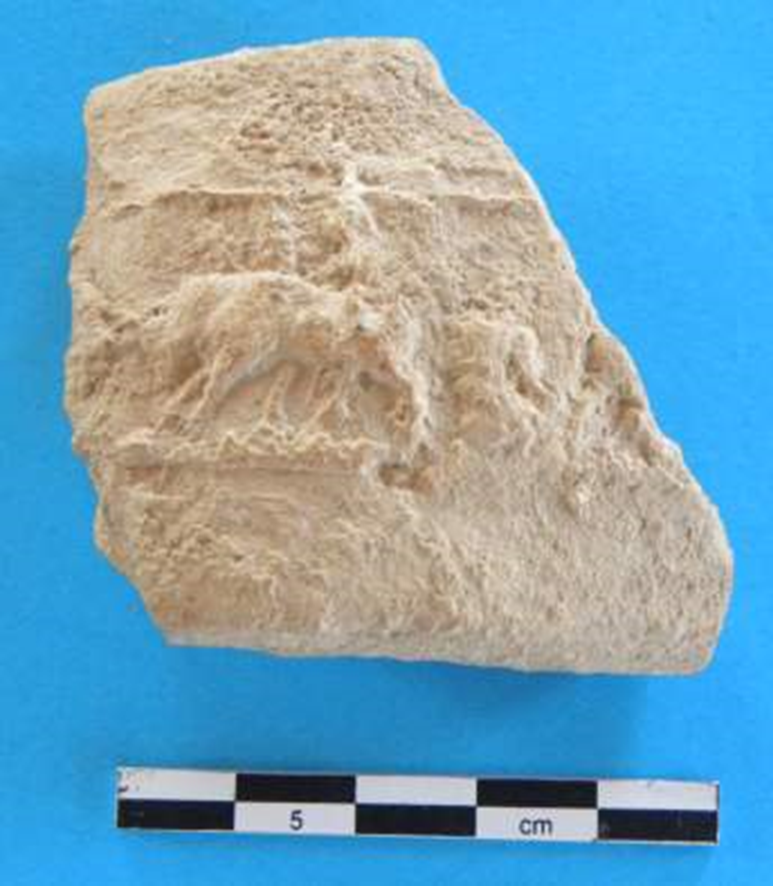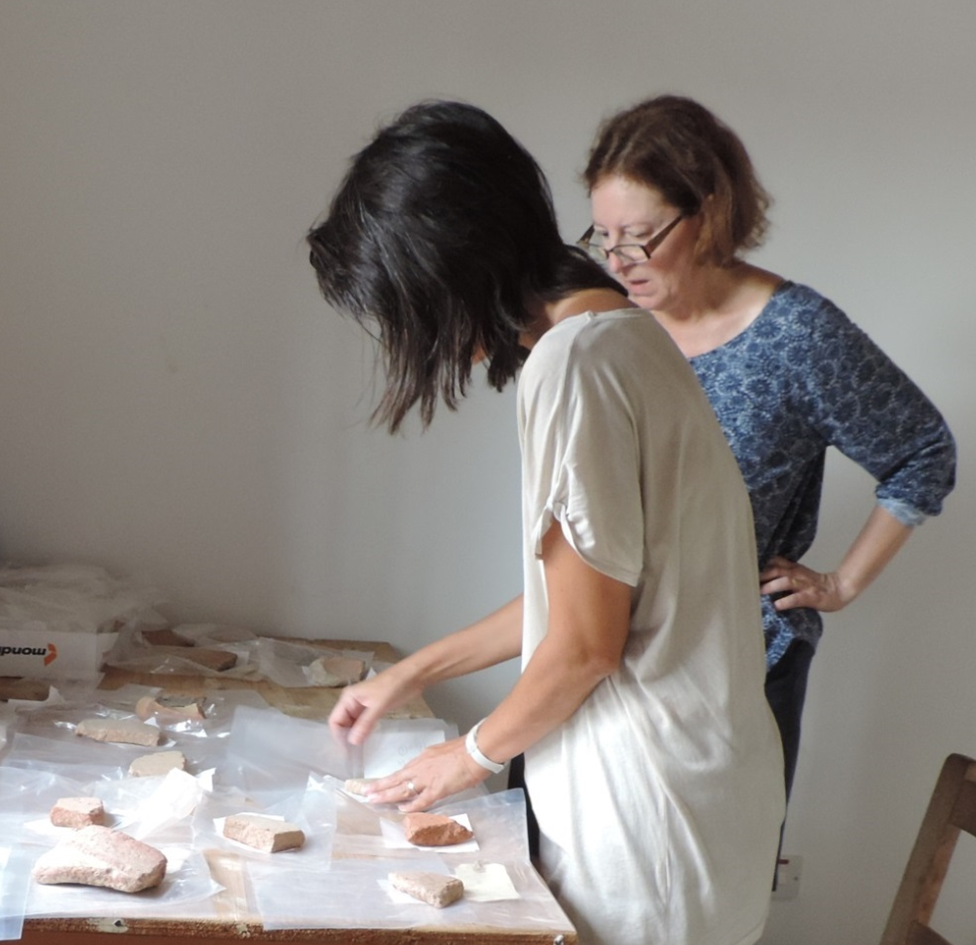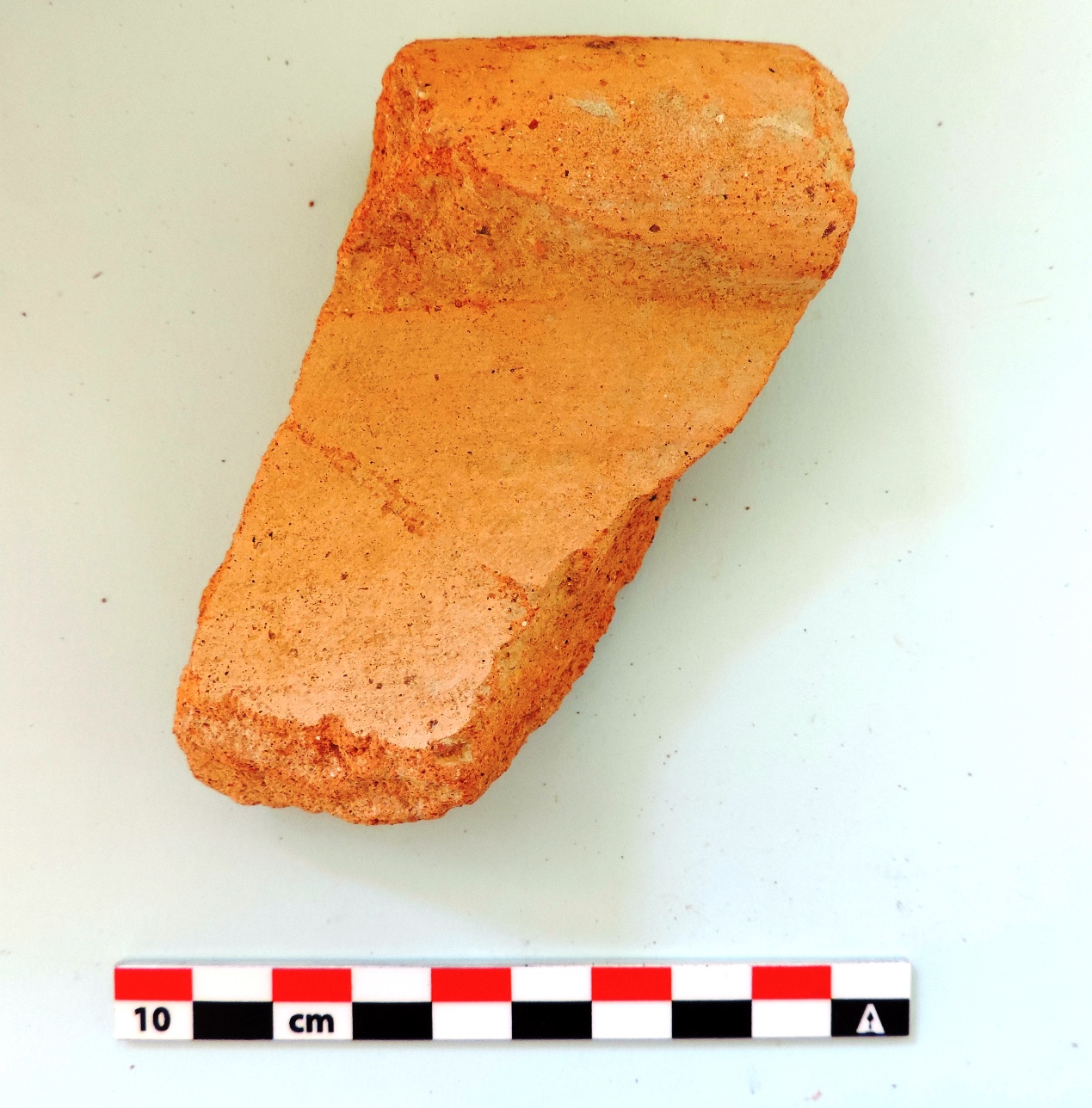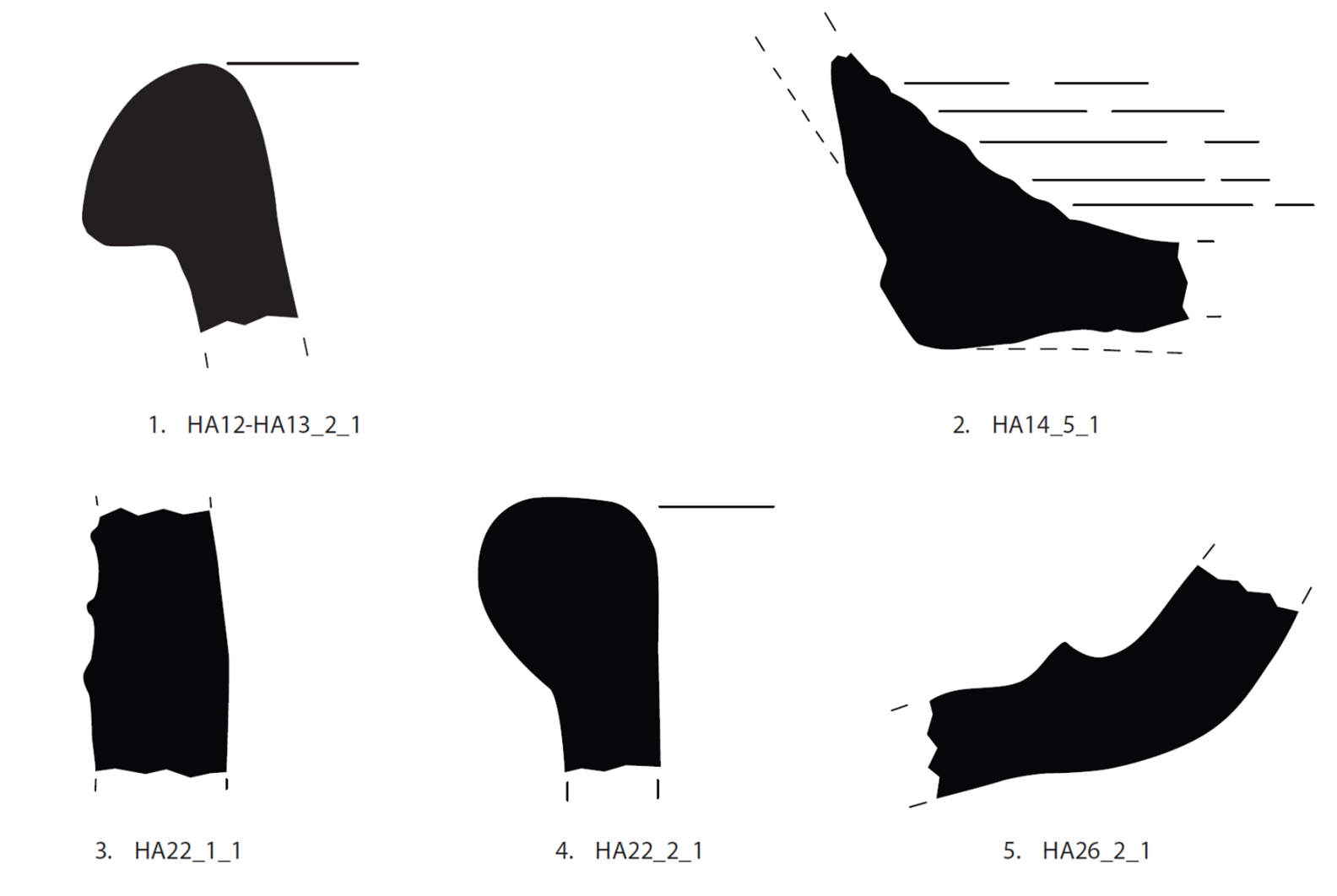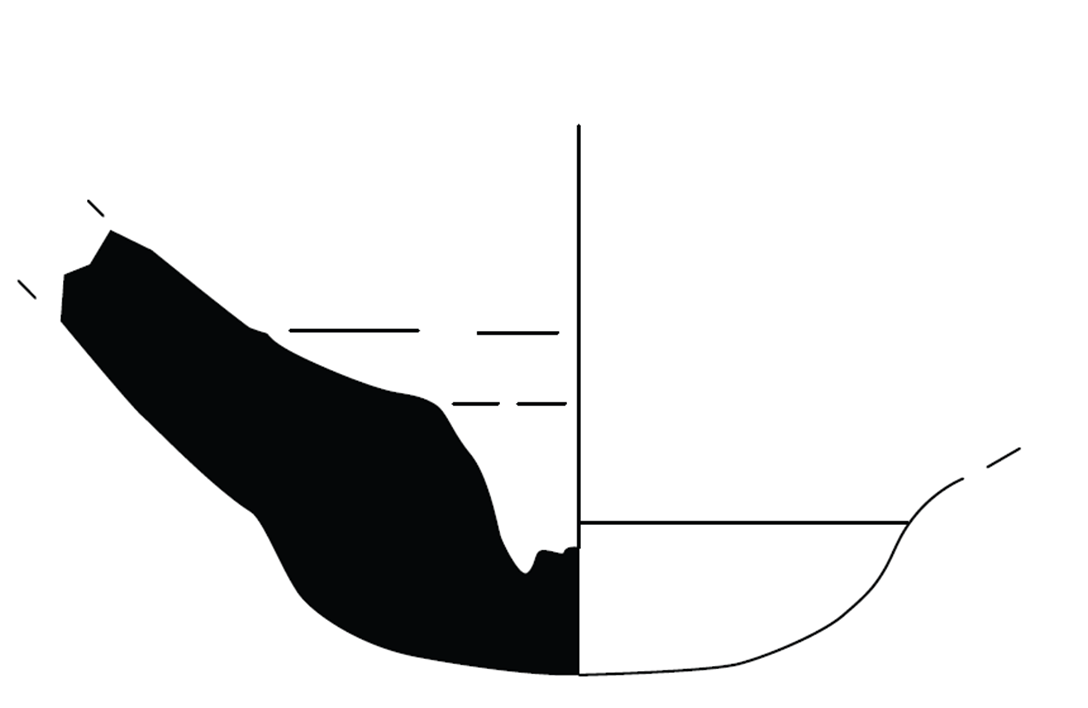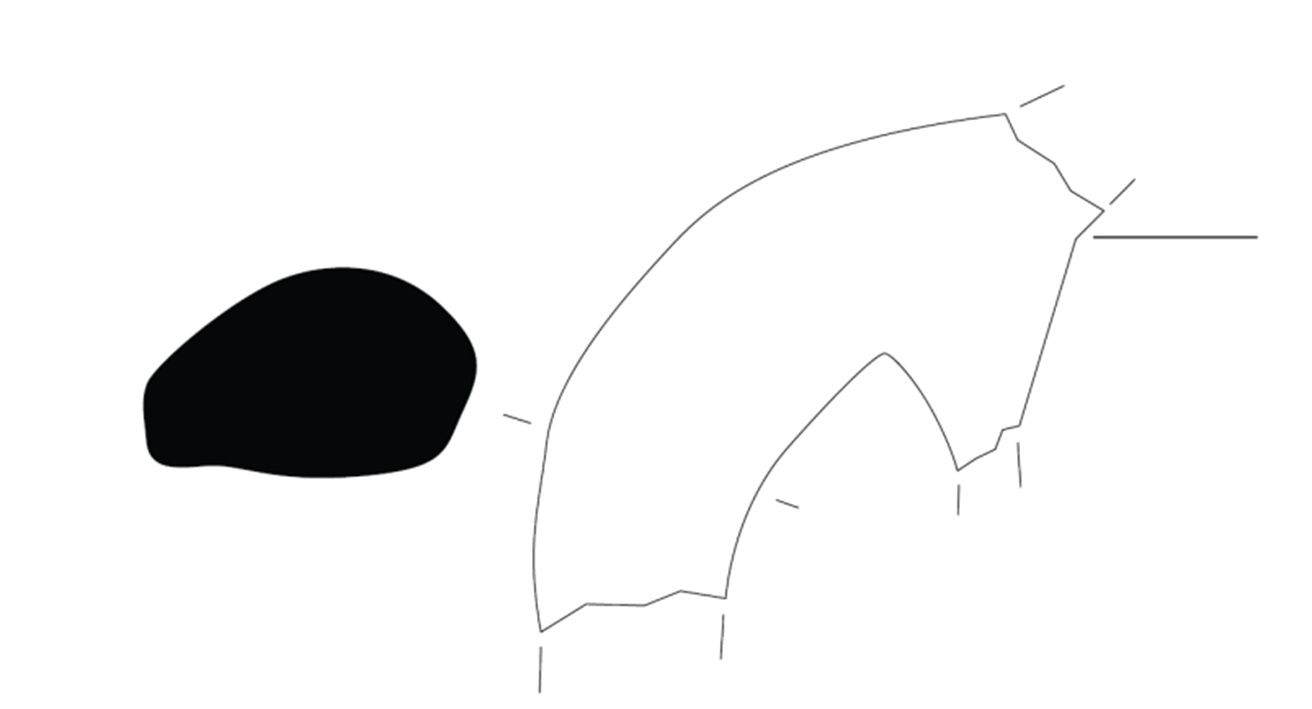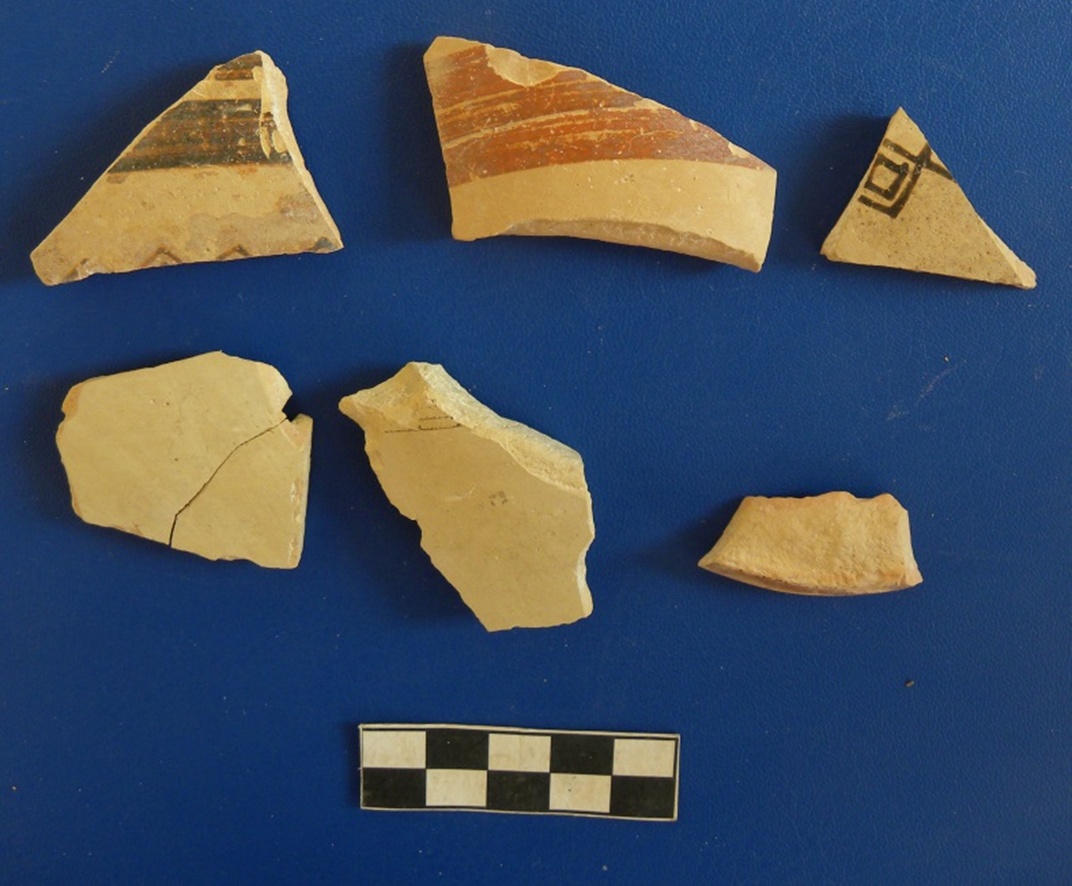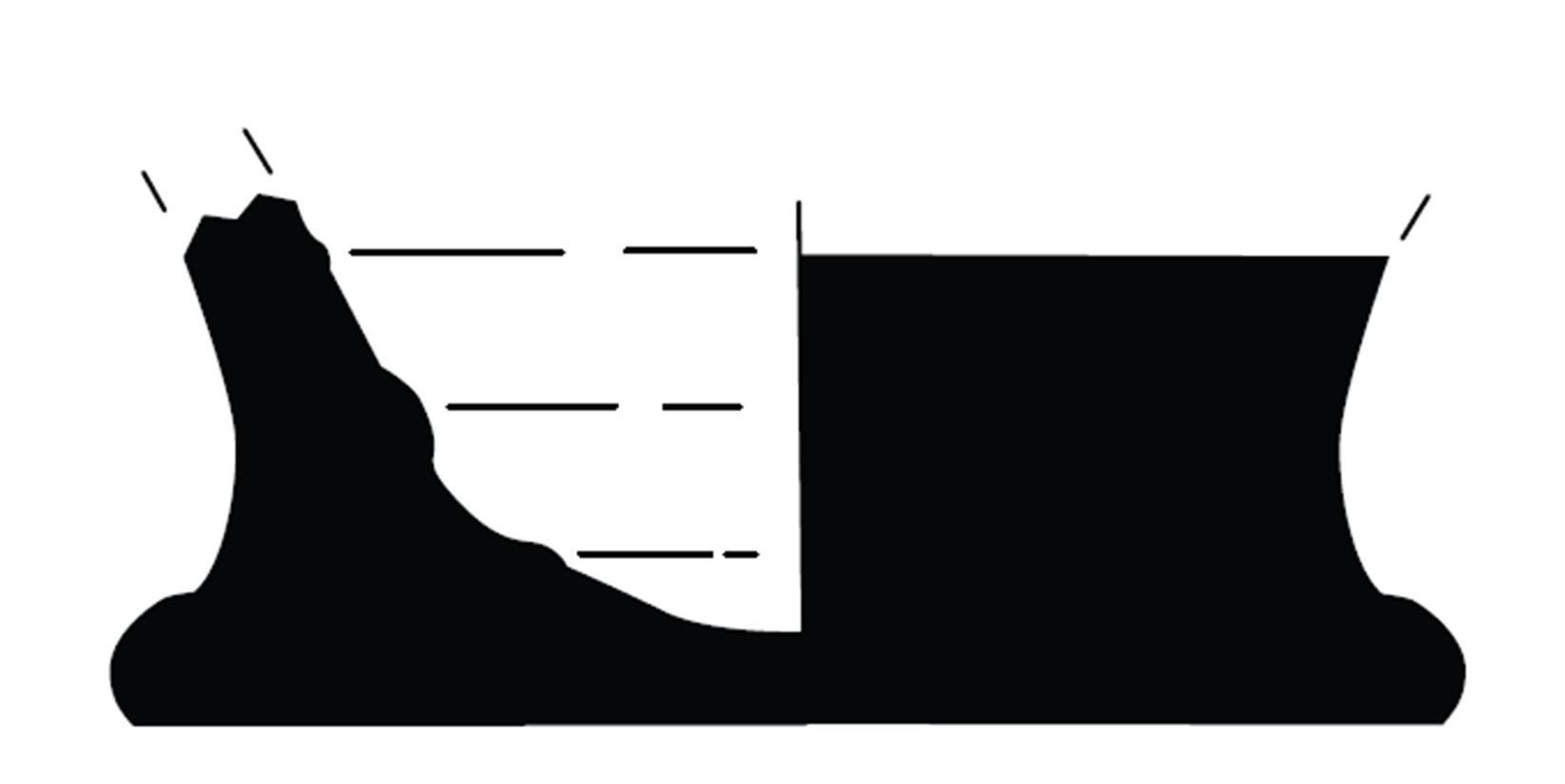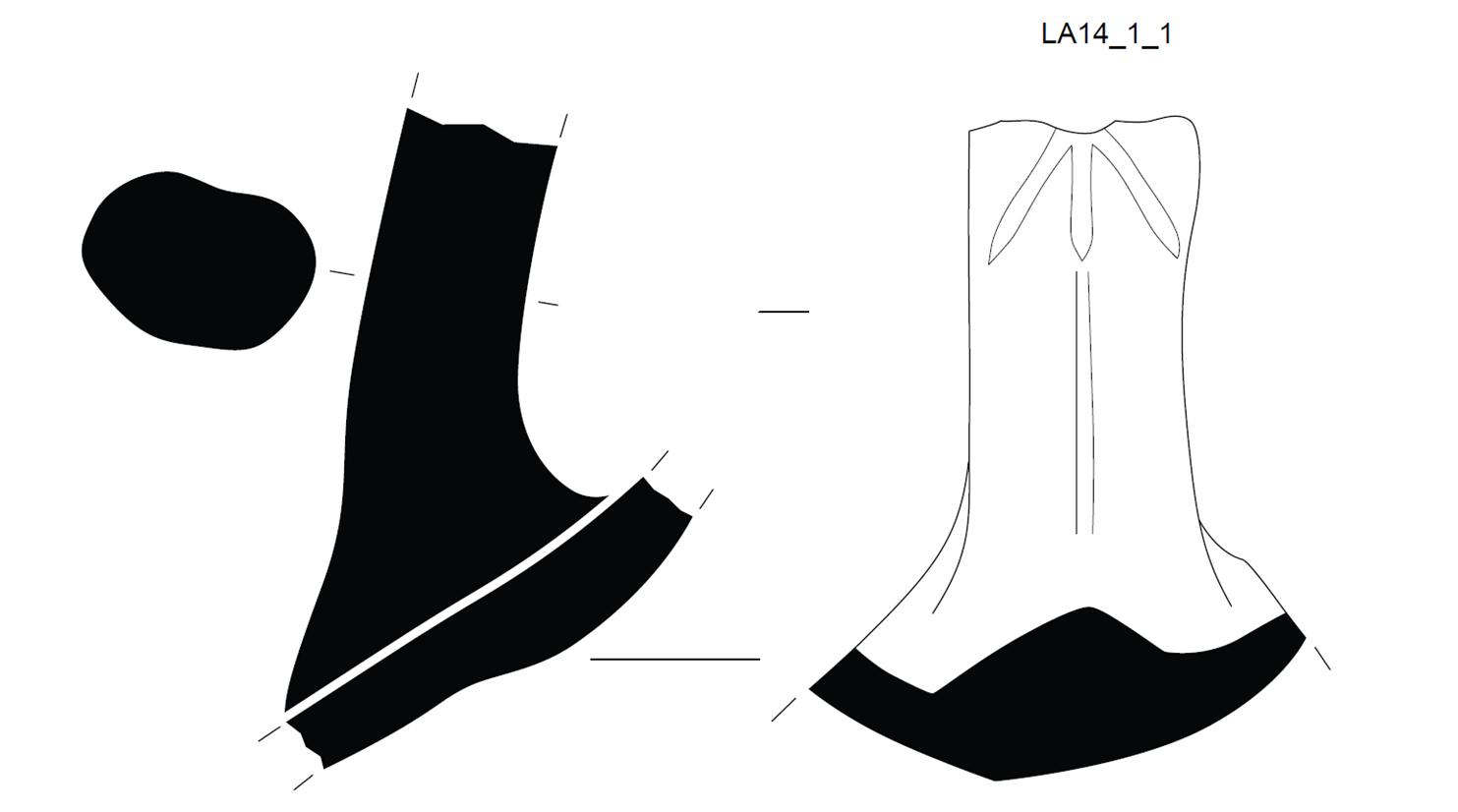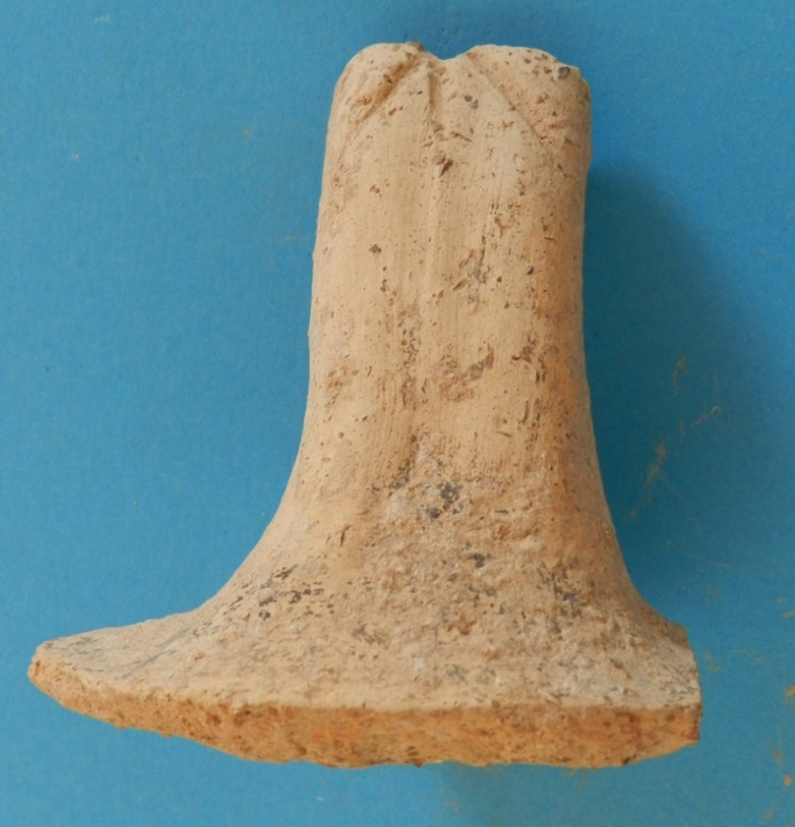| The research programme "Archaeological Investigations of the Extra-Urban and Urban Landscape in Eastern Mediterranean centres: A case-study at Palaepaphos, Cyprus", known by the acronym ARIEL, is a four-year (2013-2017) Marie Sklodowska Curie Career Integration Grant, hosted at the Archaeological Research Unit (ARU) (Department of History and Archaeology) of the University of Cyprus (UCY). The scientist in charge is Dr. Artemis Georgiou and the contact point at the Host institution is Professor Maria Iacovou.The aim of the research project ARIEL is the inter-disciplinary training and academic development of the scientist in charge for the purpose of undertaking innovative research in the highly sensitive historical region of the eastern Mediterranean. The geographical region of focus is defined as the Paphos hydrological zone, situated on the south-west coast of Cyprus. The area largely corresponds to the domain of the polity of Paphos, which flourished as an autonomous centre during the latter 2nd and throughout most of the 1st millennium BCE. The capital of the Paphian polity is identified in the area of the modern-day village of Kouklia. The town became known by the name Palaepaphos (Old Paphos) after the end of the 4th century BCE, when all administrative functions shifted to Nea Paphos, some 15km to the northwest. |
|
|
ARIEL's chronological focus is defined as the Bronze Age (ca. 2400-1050 BCE), the period that coincides with the emergence and consolidation of the earliest political forms on the island. The Late Cypriot territorial polities, such as Palaepaphos, attained economic prosperity via the exploitation of the island's cupriferous zones and the trading of the final product with other Mediterranean centres. Palaepaphos' accumulation of wealth is epitomized by the construction of a megalithic Sanctuary at the opening of the 12th century BCE, which endured down to end of Late Antiquity. Despite the richness of archaeological data unearthed, the urban and extra-urban structures characterizing the Paphian polity have only recently been addressed.
Building on the accomplishments of the open-ended "Palaepaphos Urban Landscape Project" established in 2006 by Professor Maria Iacovou, the Marie Sklodowska Curie research programme ARIEL was established at the UCY in 2013. Within the framework of ARIEL, the experienced researcher, Dr. Artemis Georgiou, was employed as a post-doctoral fellow at the Host institution, with the aim of implementing the programme's research objectives. These comprise (1) the illumination of the integral processes that led to the foundation of Palaepaphos at the dawn of the Late Bronze Age (2) the explication of the town's urban and extra-urban forms, particularly with regards to the town's urban fabric and the exploitation of the resources (3) the elucidation of the intra- and extra-island connections of the Paphian polity during the latter part of the 2nd millennium BCE and finally (4) the development of a cultural heritage management strategy that will guarantee the safeguarding of areas of archaeological value, and the education of the wider public for the need to respect archaeological remains.
ARIEL is an advanced research programme that brings together traditional archaeological methodologies (i.e. archaeological excavations, typological analyses of material remains etc.), innovative multi-disciplinary approaches (i.e. Geographical Information Systems (GIS), petrography etc.) and cultural heritage management to conduct archaeological research. ARIEL's network of collaborators at the UCY, the Cyprus University of Technology, the Geological Survey Department and the Institute of Aegean Prehistory (INSTAP) Study Centre for east Crete actively engages the fields of Information Technology, geology and the natural sciences to contribute towards the analyses and interpretation of archaeological data.
|
| |
Research objectives of ARIEL and preliminary results
Objective 1. "The foundation horizon"
Timeframe: between the 3rd and 14th month of the programme
The first objective of ARIEL aims at shedding light on the forceful processes that led to the dramatic transformation of the settlement pattern in the catchment area of Paphos and the socio-economic transformation that urged the nucleation at the coastal site of Palaepaphos. The scope of ARIEL's first objective further encompasses the explication of the character of the initial establishment at Palaepaphos and the development of social complexities and political forms that ensued from the accumulation of heterogeneous populations at the site early in the Late Cypriot period.
Based on the fieldwork research of the previous archaeological expeditions at Palaepaphos, the town's foundation horizon has been assigned to the transitional period that spans the close of the Middle Cypriot period and the dawn of the Late Bronze Age (at ca. 1650-1550 BC). The site presents an impressively long and continuous occupation, from the time of its earliest establishment and, as such, Palaepaphos' foundation horizon is so far exclusively discerned by means of residual pottery fragments and disturbed mortuary remains. The excavations undertaken by PULP at numerous localities of the Palaepaphos nucleus and the ongoing study of the artefactual remains provided substantial new data that decisively contribute towards ARIEL's first objective. Excavations exposed fragmentary, yet critical, evidence that dates to the earliest occupation phase of Palaepaphos, thus illuminating the site's foundation horizon. Excavations between the years 2006 and 2008 at Marcello revealed a limited number of White Painted, Black/Red Slip, Red Polished III-IV ware, and Proto-White Slip fragments. Marcello has also revealed two Red-on-Black sherds, which were evidently imported from the eastern part of the island. The ongoing expeditions at Hadjiabdullah also exposed evidence that dates to the earliest part of the Late Bronze Age. The excavation of the man-made tumulus of Laona, constructed with overlapping strata of red soil, brought in from surrounding areas, as well as marl, revealed ceramic data that are assigned to the earliest establishment of the site, such as Black/Red Slip and Red Polished III-IV sherds, a fragment of a Black Slip Handmade (Reserved Band) jug, three Proto-White Slip fragments and plentiful White Slip I and Base-ring I examples.
|
| |
|
|
| |
The establishment of the settlement at Palaepaphos early in the Late Bronze Age coincides with the dramatic transformation of the settlement pattern in the wider area of Paphos, evident by the abandonment of the majority of the Middle Cypriot III-Late Cypriot IA settlements. This picture is conveyed mostly by means of surface surveys in western Cyprus. It is thus very important that within the framework of the research programme ARIEL we were able to examine ceramic and other remains from tombs excavated at the sites of Kedares and Anarita by the Department of Antiquities, and Timi-Sentoutzin tou Rafti, excavated by the British Mission in the 1950s. These mortuary contexts do not continue beyond the Late Cypriot IA period, thus confirming the impression gained by surface survey projects.
Following the archaeological excavations undertaken at the site, as well as the ceramological studies and academic research conducted by the fellow, it was ascertained that upon its foundation, Palaepaphos acted as the regional gateway center of the Dhiarizos valley, linking a chain of settlements that extended from the metalliferous zones of the Troodos foothills to the coast, and by extension to long-distance trade. Early Palaepaphos comprised an agglomeration of various communities that nucleated by the coast to partake to the emergent economic order centred on the procurement of copper and its maritime export.
|
| |
|
|
|
|
| Objective 2. "Urban and extra-urban structures"
Timeframe: between the 14th to the 32nd month of the programme
The second objective of the research programme ARIEL involves the analysis of the urban and extra-urban character of the Paphos catchment area during the latter part of the Late Bronze Age (circa 1400-1050 BCE), when Palaepaphos became a flourishing urban centre in charge of an extended periphery. Specifically, ARIEL aims at characterizing the functional identity of each of the urban nucleus' components (residential, industrial, administrative, sepulchral, religious etc) and reproduce Palaepaphos' idiosyncratic urban settlement fabric. Additionally, ARIEL aspires to explicate the polity's extra-urban structures and define its economic periphery. A major aspiration of the ARIEL programme has been to define the exploitation of the cupriferous resources found at a distance of 25-30km from the urban centre and to delineate the routes extending from the Troodos ridges to Palaepaphos.
Addressing the second objective of ARIEL we have taken into account the new data brought to light by the ongoing targeted excavations undertaken by the University of Cyprus at Kouklia, as well as the fellow's specialized material studies. The preliminary results of this task indicate how the urban centre of the Paphian polity consisted of distinct nuclei that accommodated a variety of functions. It was also possible to infer that Palaepaphos followed the Late Cypriot mortuary custom of establishing tombs within residential areas, judging by the co-existence of mortuary and secular material. Our investigations further determined the idiosyncratic regional character of the Paphian ceramic industry in terms of both the storage and the fineware pottery wares. The excavation of significant quantities of large storage and utilitarian vessels assigned to the Late Bronze Age from Hadjiabdullah and Laona indicate how both areas accommodated residential activities.
During the excavations conducted by PULP on top of the Hadjiabdullah terrace, considerable quantities of Late Bronze Age ceramic material were unearthed, particularly to the south of the large monumental structure excavated in the 1950s by the British Mission. The assemblage consisted of large storage and utilitarian vessels, including numerous short- and long-necked pithoi, some of them massive in size, suggesting that the corpus represents the remains of disturbed settlement strata. The site of Hadjiabdullah has also produced a handle fragment of a small pithos bearing the impressed frieze of a cylinder seal, depicting two fighting bulls and a human figure trying to separate them. This iconography is paralleled in comparable examples from other Late Cypriot sites, and has been linked with the control and the administration of agricultural produce.
|
|
|
| In addition to our investigations at the urban centre of the Paphian polity, we initiated fieldwork research within the Paphos Forest. Our ventures seek to map and record the distribution of massive slag heaps, which correspond to the residue of large-scale copper processing. We anticipate confirming the productivity of the copper deposits within the Paphos region, and additionally explicating the role of the area's copper resources in the development of the politically autonomous and economically flourishing territorial state of Paphos. In order to provide a secure chronological dating, we collected carbon samples that were sent to SUERC Laboratory in Scotland. Within the scope of this task, we collaborate with Dr. Zomenia Zomeni (Senior Geological Officer, Cyprus Department of Geological Survey) who provides her expertise and knowhow on geological cupriferous formations techniques, and Dr. Athos Agapiou (Cyprus University of Technology) who undertakes the topographical surveying, geolocation and volumentric calculation of the slag heaps. |
| |
Objective 3. "Intra- and extra-insular connections"
Timeframe: between the 33rd to the 46th month of the programme
ARIEL's third objective is twofold: a) Firstly, the project investigates the relations between Palaepaphos and other Cypriot polities of the Late Bronze Age, aiming to contribute to ongoing discussions relating to the island's political organization during the 2nd millennium BCE. b) Secondly, ARIEL examines the contacts of Palaepaphos with other Late Bronze Age polities of the eastern Mediterranean, and explores the site's position within the "international" trading network.
As a specialist in ceramic studies, the fellow has been participating in archaeological expeditions in Greece and Cyprus, thus familiarizing herself with archaeological remains across the island and beyond. This hands-on experience as well as the collaborations she has developed will be indispensable when addressing the programme's third objective that elucidates the connections between Palaepaphos and other polities on the island and the eastern Mediterranean.
Aiming to explicate the local production of Late Cypriot storage vessels and delineate Palaepaphos' connections with other polities of the island, we have initiated the inter-disciplinary study of pithoi unearthed by PULP from the sites of Laona and Mantissa. Together with Dr Priscilla Keswani (Independent Researcher) and Dr Eleni Nodarou (INSTAP Study Centre for East Crete), we completed the typological and macroscopic study of the storage vessels from PULP's excavations at these two sites. The corpus of pithoi was also sampled and will be further analysed by petrographic studies by Dr Nodarou in the laboratory of INSTAP's Study Centre for East Crete. We have also taken samples from various sites within the wider Paphos region, which will be also analysed to determine whether they constitute the sources for the manufacture of the pithoi.
|
|
|
|
The external connections of the Paphian polity during the Late Bronze Age were explicated by the copious amounts of imported artefacts that were newly brought to light by PULP's excavations at Kouklia. These include fragments of Late Helladic vessels from the Greek mainland, Canaanite Jars from the Levantine coast and a Late Minoan stirrup jar handle of the "oatmeal" fabric, inscribed with a Cypro-Minoan mark.
|
|
| Objective 4. "Cultural heritage management and public outreach" (Work Package 6)
Timeframe: between the 9th to the 48th month
ARIEL's fourth objective entails the development of a heritage management tool, which will enable and encourage the preservation of the natural and archaeological environment in the area of Palaepaphos. The fieldwork expeditions conducted by the University of Cyprus within the framework of ARIEL have expanded the zones of archaeological interest and have thus safeguarded archaeological remains that were otherwise under imminent threat. What is more, the dissemination of the project's results and other public outreach activities aspire to educate the wider public, and especially the local community of Kouklia, on the value of archaeological research and the need to respect cultural heritage.
As well as disseminating the programme's results to the academic community, ARIEL has been aiming to educate the general public for the need to be knowledgeable about the past and the value of cultural heritage. In particular, we encouraged and welcomed visits to the sites where we conduct archaeological excavations by the local community of the Kouklia village, where our team aspires to inform them on the cultural significance of the area, and on the need to respect the region's archaeological remains. Furthermore, the fellow has been an active member of public outreach activities undertaken by the ARU. She has contributed to the organization and running of the event "Science Rocks! - Researcher's Night 2013", coordinated by the Research Promotion Foundation. ARIEL participated with two posters and the experienced researcher was actively involved in the activities organized for the wider public, welcoming adults and children of all ages to ARU's kiosk.
|
| ARIEL is grateful to the following people and institutions for their collaboration
· The Rector, Vice-Rectors and the administrative officers of the University of Cyprus
· The Director and administrative staff of the Archaeological Research Unit
· The President and faculty members of the Department of History and Archaeology
· The Director and archaeological officers of the Department of Antiquities, Cyprus
· The staff of the Local Museum of Palaepaphos at Kouklia
· Dr Zomenia Zomenia, Senior Officer, Geological Survey Department, Cyprus
· The Geological Survey Department, Cyprus for digital data
· Dr Athos Agapiou, Cyprus Institute of Technology
· Dr Priscilla Keswani, Independent Researcher
· Dr Eleni Nodarou, INSTAP Study centre for East Crete
· Dr Maria Dikomitou-Eliadou, Archaeological Research Unit
|
